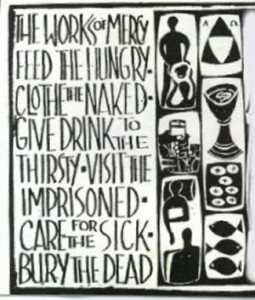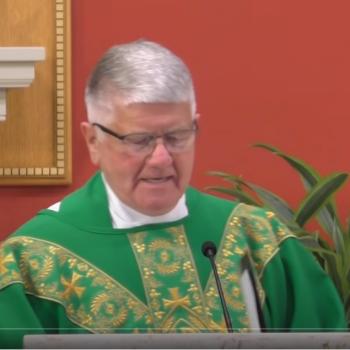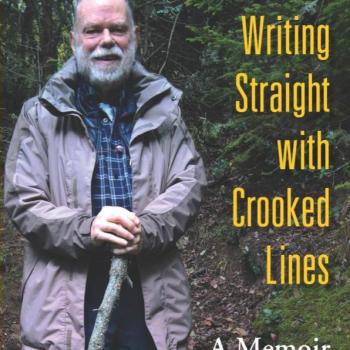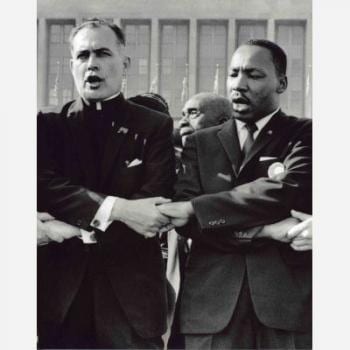I confess I like the Benedict Option. I am attracted to the notion of intentional community. I trust in the long-term missionary potential of practices of stability. One might say I have lived in a BenOp community, although most of us living there would not describe it as such, and some would overtly dispute the claim. I have argued at conferences for Ratzinger’s Benedict Option, but I think Ratzinger’s Benedictine idea of creative minorities might have more in common with the “Dorothy Option” than with Dreher’s BenOp.
Regarding the “Dorothy Option,” I don’t recall what notion Mark Gordon’s original post at Vox Nova conjured for me. Now, the phrase brings to mind another alternative to Dreher’s vision, but it is more than that. The BenOp is itself a riff on Alasdair MacIntyre’s After Virtue, in which the great philosopher famously prophesied, “We ought to conclude that for some time now we too have reached that turning point. What matters at this stage is the construction of local forms of community within which civility and the intellectual and moral life can be sustained through the new Dark Ages, which are already upon us. We are waiting not for a Godot, but for another—doubtless very different—St. Benedict.” The BenOp and other “options” out there generally accept MacIntyre’s dim assessment of our situation and differ on the proper form of community needed to weather the apparently coming dark ages. Unfortunately, the argument is mostly an academic exercise. I’ve often felt like an admirer of Benedict (rather than a follower), engaging in high-minded and idealistic disputes about which “option” is the best pedagogical model for the laity. At least, that is how I perceived myself when entrenched in the debates. But with Dorothy, for me, it is different. More on that below.
MacIntyre is not the only giant of the 20th Century to have made such dire predictions. Less than a decade after the conclusion of the Second Vatican Council, Karl Rahner and other prominent theologians were speaking of a “winter in the Church.” Joseph Ratzinger admitted, “it did seem that, after the great blossoming of the Council, frost was creeping instead of springtime, and that exhaustion was replacing dynamism.” Appearances can be deceiving. “Something suddenly happened which no one had planned. The Holy Spirit had, so to say, once again made his voice heard” in the emergence of new ecclesial movements.
New movements have long been among the Spirit’s choicest methods for bringing reform and revival to the Church. When the mass conversion of Roman citizens to Christianity cooled the radical fire of early Christian witness into lukewarm living, Anthony fled to the desert radically to live the Gospel. The eremitic life became an important witness to the demands of the Gospel. When the Pax Romana was falling into debauchery and barbarism, Benedict’s Rule brought stability to a crumbling Christian world. As monastic corruption grew prevalent, Dominic and Francis emerged as new witnesses to the deep roots of Christian life. Ratzinger identifies the 20th Century movements with this tradition.
Each new movement, as a body of persons inspired by a charism, radically lived the Gospel; their lives overflowed the bounds of their local community and bore witness to the Christian difference. Ratzinger concludes that these movements which renew and revitalize the Church “generally come from a charismatic leader and they take shape in concrete communities that live the whole gospel anew from this origin and recognize the Church without hesitation as the ground of their life, without which they could not exist.”
Looking at the history of the Church, the “reforms” that stick tend to flow from the “spirited” energy of a charismatic founder: Benedict, Francis, Dominic. The monastic and mendicant movements were not options debated academically. Nor were they more-or-less well-planned alternatives to the status quo. They were the fruit of the Spirit, raising up leaders among the anawim of their time. No one movement is condemned into obsolescence by the arrival of a new charism. They are many parts serving the One Body; each aiming to live the vita evangelica in their own cultural context.
At present, the majority of the “option” conversations seem too heady, lacking the spirit necessary to function effectively as creative minorities. Such conversations are not useless. They might even be necessary. History shows, however, that in times of upheaval, the Church – and thus the world – is kept afloat not by brilliant schemes but by the intervention of the Spirit.
What separates the Dorothy Option from the BenOp and other “options” is, I think, the demonstrably charismatic and spirited leadership of both Dorothy Day and Peter Maurin. I don’t feel like a mere admirer of Dorothy. I don’t even “like” the Dorothy Option as much as the BenOp. No, participating in Dorothy’s charism is much too challenging to be some romantic ideal. Instead, I am challenged by the Dorothy Option, called to renounce myself radically. That’s what this “option” is to me: a call to enter into a movement of the Spirit, the Spirit who is pushing, tugging, dragging me to love the Lord in the poor, who is in fact calling the entire Church back to her roots through loving the poor.
Josh Brumfield earned his Ph.D. in Systematic Theology from CUA in 2016 and is currently Visiting Professor of Theology at the University of Holy Cross in New Orleans. He wrote his dissertation on “Communion and Mission in the theology of Joseph Ratzinger,” and his essay “The Dorothy Option? Dorothy, Benedict, and the Future of the Church” has recently been published in Solidarity Hall’s second book: Dorothy Day and the Church: Past, Present, and Future. Josh enjoys spending time with his family and teaching.












